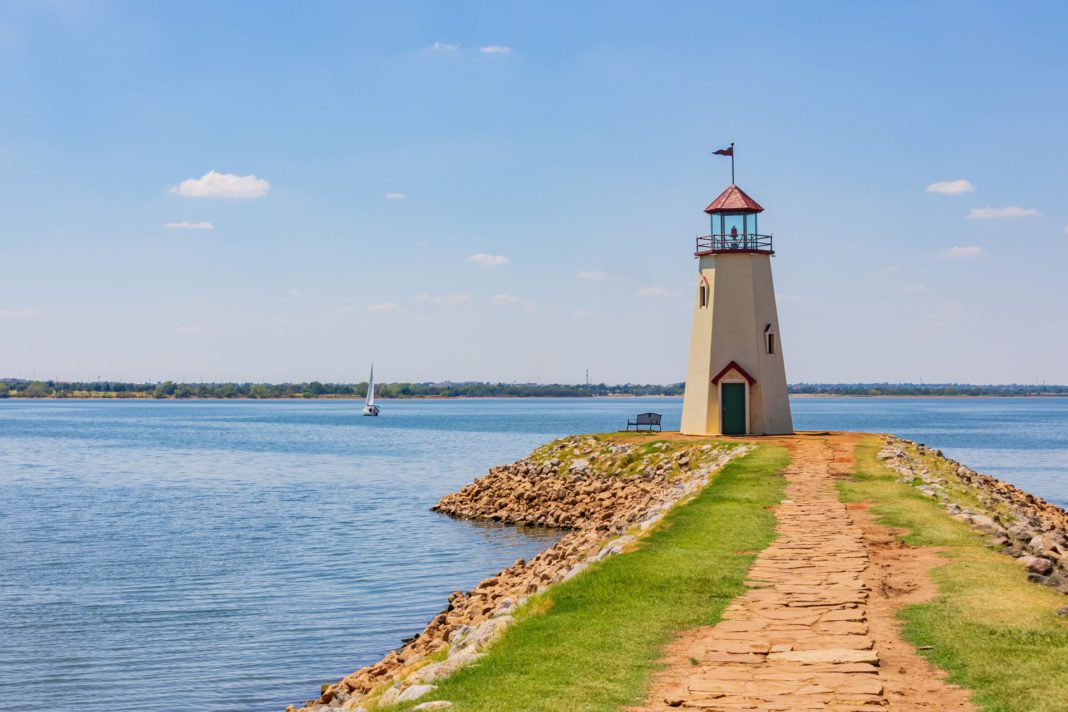With Memorial Day fast approaching, it’s a good idea to review general boating and swimming safety rules before taking that first trip to the lake or pool. Mike Mize, Oklahoma’s Boating Law Administrator, offers some advice.
1. Be aware of changing shoreline depths.
Mize says that one factor often overlooked as it pertains to water safety is the ever-changing shoreline depths and drop offs, especially when escorting young children to the state’s lakes.
“As the lake levels fluctuate due to rain or draw down, the amount of shallow shoreline also fluctuates,” says Mize. “Inevitably, the water will drop off into much deeper water, and it only takes a few seconds for a child to drop out of sight and be in serious trouble. Children should always wear a comfortable and proper fitting personal flotation device (PFD) while swimming or wading.”
Mize suggests adults take turns being the “designated person” to keep eyes on the youngsters while they are in the water, wherever that water may be.
2. Understand age and license restrictions for watercraft.
Oklahoma does not require people to have a license to drive a boat or other watercraft. However, a child under 12 may not operate any powered vessel over 10 horsepower, a personal watercraft (PWC) or a sail-powered vessel 16 feet or more in length.
If a child is over 12 but under 16, he or she can complete a boating safety education course. If passed, the child can drive a craft on the water if accompanied and supervised by a competent person over the age of 18.
3. Remember the rules for drinking and boating.
Drinking and boating shouldn’t mix.
“Obviously, the consumption of alcohol and/or drugs while boating can have serious consequences,” says Mize. “The boating rules mirror on-the-road-driving rules, in that a person is considered under the influence with an alcohol concentration of 0.08% or higher, measured in a person’s breath or blood.”
4. Use common sense.
Mize further suggests always wearing a PFD.
“Ninety percent of all drowning victims were not wearing a PFD,” he says. “Never gather and float or swim in the area of a running engine – carbon monoxide poisoning can happen quickly and overtake a person before they even realize it, and it can have fatal effects.”
Another danger at the back of a vessel is the potential for a propeller strike.
“Never jump off the back of a vessel while the engine is running, and never start the engine when any of the boat’s occupants are in the water,” he adds.
If you are planning alone time on the water, always let someone know where you’re going, when you plan to return and what boat ramp you’ll be using.
“Utilize an engine cut-off switch,” says Mize. “If used properly, these devices will shut the engine down should the operator be thrown from the operator’s position.”
If an inflatable toy, raft or other item starts to drift away due to wind, do not attempt to swim after it.
“Many people risk their lives or drown trying to retrieve a $5 raft,” says Mize. “And never attempt to swim across a cove. Swimmers always underestimate the distance and overestimate their swimming ability.”

























